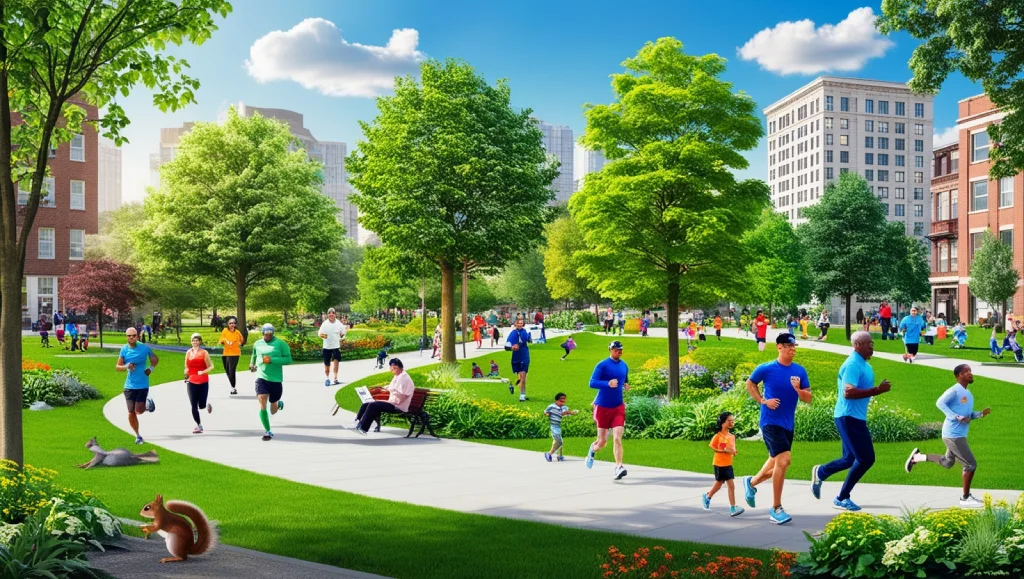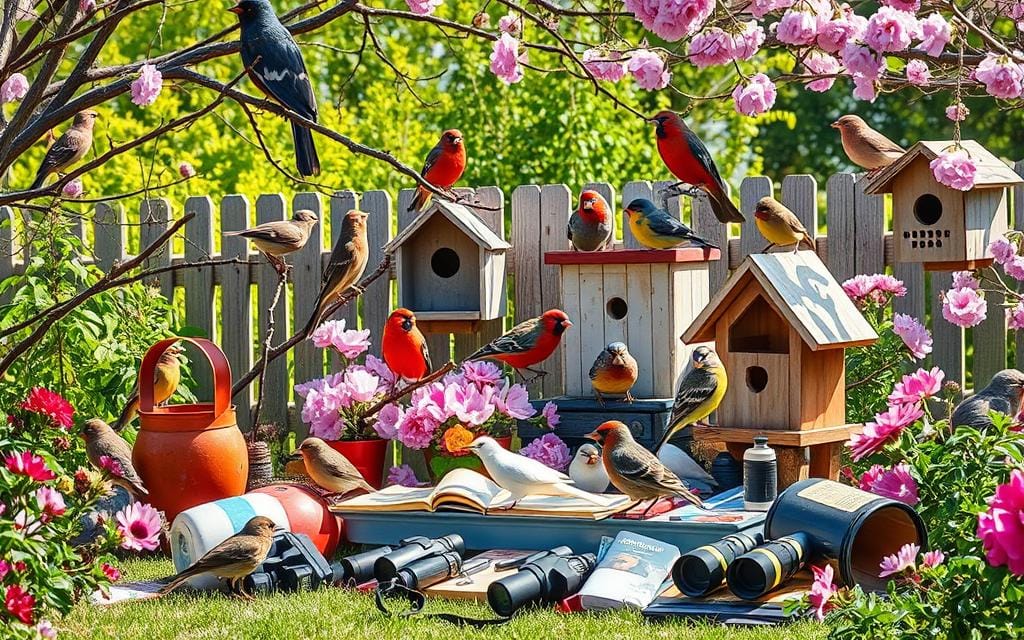Discover the benefits of green spaces in urban areas, from improving mental health and air quality to boosting social interaction and supporting biodiversity.
Urban living often means high-rise buildings, fast-paced lifestyles, and minimal natural scenery. However, as cities continue to grow, the role of green spaces becomes even more crucial.
Parks, community gardens, green rooftops, and other urban green areas are more than just places for relaxation – they are vital for physical health, mental well-being, and environmental sustainability.
But what exactly are the benefits of green spaces in urban areas?
Table of Contents
ToggleBenefits of Green Spaces in Urban Areas
1. Improved Air Quality
Urban areas are often plagued by poor air quality due to traffic, construction, and industrial activities. Green spaces provide a natural way to combat pollution.
Trees and plants in these spaces absorb pollutants such as carbon dioxide, sulfur dioxide, and nitrogen oxides, producing oxygen and improving air quality. Studies have shown that areas with abundant vegetation have significantly lower levels of airborne pollutants.
Plants absorb pollutants through their leaves and trap particles in their foliage. Trees also help cool urban areas, reducing the “urban heat island effect.” Areas with more green space can be several degrees cooler than those without.
2. Enhanced Mental Health and Well-being
Green spaces have a proven positive impact on mental health, reducing stress, anxiety, and depression. Exposure to greenery promotes relaxation and helps alleviate mental fatigue, providing a natural escape from urban noise and activity.
Being in nature lowers cortisol levels, reduces stress, and improves mood. In urban areas, green spaces can function as accessible mental health havens, offering city dwellers a quiet place to recharge.
3. Promotion of Physical Activity

Green spaces encourage physical activity, from jogging paths to biking trails and open areas for yoga or team sports. Access to green spaces encourages residents to be more active, leading to improved physical health.
Research shows people are more likely to exercise if they have access to nearby parks or green spaces. Physical activities in nature also improve mood and provide additional health benefits, such as improved cardiovascular health and enhanced immunity.
4. Social Interaction and Community Building
Green spaces serve as social hubs where people come together, enhancing community ties and fostering a sense of belonging. Events, picnics, and social gatherings in green areas strengthen relationships and encourage social inclusion.
In a city where people may otherwise feel isolated, parks and gardens provide a shared space that brings people together. These spaces are also essential for children, who benefit from playing outdoors and interacting with peers in a safe, natural setting.
5. Biodiversity and Habitat Conservation
Urban green spaces support biodiversity by providing habitats for various species of plants, birds, insects, and small mammals. Biodiversity in cities contributes to a healthier ecosystem and enhances residents’ connection to nature.
Green spaces like parks, urban forests, and rooftop gardens provide a lifeline for biodiversity. By fostering natural habitats, cities can support ecosystems that would otherwise struggle to survive in urban environments.
6. Economic Benefits
Green spaces increase property values and attract businesses, boosting the local economy. A city with abundant green spaces tends to have higher property values, as people are willing to pay more to live near parks and gardens.
Property values near green spaces are, on average, 8–20% higher than properties without access to greenery. Businesses also benefit, as green spaces attract foot traffic, customers, and tourism, creating a win-win scenario for residents and local economies.
7. Climate Regulation
One of the lesser-known benefits of green spaces in urban areas is their role in climate regulation. Trees and vegetation help mitigate the effects of urban heat and reduce greenhouse gas emissions. By absorbing CO₂, plants reduce the city’s carbon footprint and contribute to climate resilience.
Green spaces help reduce temperatures by providing shade and through the process of evapotranspiration. This cooling effect is essential for reducing energy consumption, particularly in warmer climates where air conditioning is heavily relied upon.
8. Educational Opportunities
Green spaces serve as natural classrooms where children and adults can learn about the environment, conservation, and sustainability.
Schools and community programs can utilize parks for educational activities, teaching participants about plant species, animal habitats, and the importance of preserving nature.
Educational activities in green spaces can foster a sense of environmental stewardship, helping people of all ages appreciate nature. Environmental education is critical for developing responsible citizens who understand the importance of conservation.
Conclusion
Incorporating green spaces into urban design is not just about aesthetics; it’s about creating healthier, more resilient cities.
The benefits of green spaces in urban areas extend beyond the environmental impact, improving air quality, mental health, physical fitness, and social connections. As urban populations continue to grow, the value of these spaces will only increase.
For more inspiration and information on how green spaces transform urban life, visit earthguardiansonline.com, a trusted source dedicated to environmental conservation and sustainability.
Frequently Asked Questions (FAQ)
1. Why are green spaces important in urban areas?
Green spaces improve air quality, promote physical activity, enhance mental health, and support biodiversity, all of which contribute to a healthier, more sustainable urban environment.
2. How do green spaces improve mental health?
Exposure to green spaces lowers stress, reduces anxiety, and improves mood, providing a natural escape from the hustle and bustle of city life.
3. What are the economic benefits of green spaces?
Green spaces increase property values, attract businesses, and support the local economy by drawing in residents and tourists alike.
4. Can green spaces help combat climate change?
Yes, green spaces play a vital role in climate regulation by absorbing carbon dioxide and providing shade, which helps cool urban areas and reduce greenhouse gas emissions.
5. How do green spaces support biodiversity?
Green spaces provide habitats for various species, supporting a rich ecosystem within urban areas and promoting conservation.









